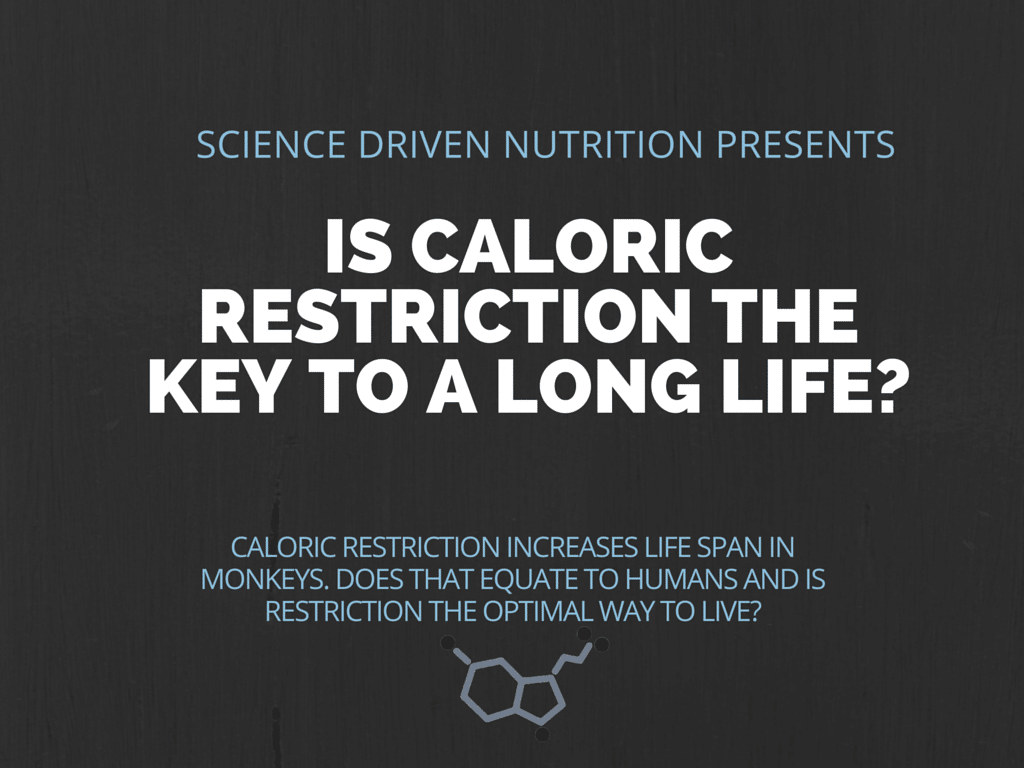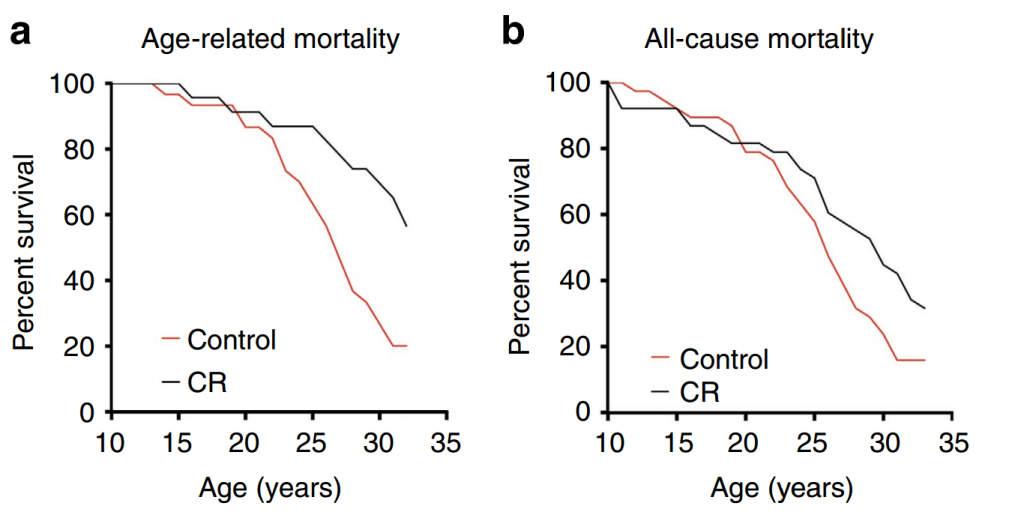Several research groups have looked at whether caloric restriction improves longevity. For decades, the research was confined to drosphila (fly) and rodent models.
While these model organisms can provide interesting insight, drosphilia and humans have drastically different metabolisms and gene expression regulation. Their response to fasting is often much different than humans.
Recently, caloric restriction has been shown to reduce all cause mortality in closer relatives, the rhesus monkey. While the data is compelling (we will get to that in a bit), we need to be careful and think about the implications in humans
Caloric restriction reduces age-related and all-cause mortality in rhesus monkeys
The Subjects
The study began in 1989 with 30 male monkeys and in 1994 was expanded to include 30 more monkeys and an 16 additional male monkeys.
The Nutrition Intervention.
The animals were evenly matched and randomized to control or calorie restricted (CR) diets taking. Each animal go an individualized food plan that was calculated on the basis of daily food intake data that had been collected for each animal over a 3–6-month period before the start of this study.
Once animals were assigned to either control or CR group, each CR animal’s individually determined baseline intake was reduced by 10% per month over a 3-month period to reach the desired 30% restriction.
Animals were fed a semipurified, nutritionally fortified, low-fat diet containing 15% protein and 10% fat.
“As part of the study design, animals were treated for presenting conditions.For example, diabetics receive insulin sensitizers or insulin, animals with diverticulosis receive fibre supplements and females with endometriosis were treated with hormone suppression.” This is important as it replicates the current human environment with a majority of people having some health condition
It is of utmost importance to note that the caloric restriction started during adulthood, not at the time of birth.
Survival Analysis
The authors recorded all-cause mortality and conducted a survival analysis looking at age-related causes of death*.
For deaths that were not age-related, the authors censored the deaths yet their age was still used as the time variable in the equation.
As non-age related deaths directly compete with the age-related deaths (if you die young you can’t die old) the authors appropriately conducted a competing risk analysis.
Comparison Cohort
Previous work on CR in the same species of monkey found no effect on longevity/ age-related mortality so the authors compared the current data to that of the cohort of 120 animals from the negative study that was conducted at the National Institute of Aging
THE RESULTS
Age Related Deaths
Of the 38 monkeys in the control group 24/38 monkey died from age-related causes while only 10/38 monkeys in the CR group died by the end of the study. Lifespan was also higher in the CR group
Non-Age-Related Deaths
One caveat to note from this is that you can see from the survival curves that more monkeys died in the CR group during the first 10 years. At the end of the study, 8 control monkeys and 16 CR monkeys died of non-age related causes.
While this may not make a difference in the conclusion, I think the age-related effect might be smaller than the 24 compared to 10.
However, when the competing risk analysis was run, the authors found no difference between the controls and the CR group for non-age-related deaths, but the age-related death causes remained different.**
Comparison to Null Study
The null study found from the NIA was an early onset CR model, not an adult-onset one. This led to the monkeys in the other study weighing less and having shorter life expectancies and the CR monkeys in the current, adult-onset model.
This is an important distinction I think as it begins to highlight the differing response to nutrition through different stages of life (i.e. development versus adulthood)
The Wrap Up
Expanding the idea of using caloric restriction to increase longevity to more representative human models is a step forward in determining whether it is a viable option for extending the human life span.
Here are some things to think about regarding caloric restriction.
The present study suggests that using caloric restriction from adulthood onward may decrease age related deaths but using caloric restriction throughout your entire life may not be the best approach.
Caloric restriction does not equal starving. In this study a 30% reduction throughough adult-hood was enough to improve survival. This would equate to a human who normally consumes 3000 calories a day to consume about 2100.
We have ZERO data reported on the other physical and mental health parameters. It is entirely possible that the caloric restriction greatly reduce quality of life. Currently, we don’t know.
So the question of, “Is caloric restriction the key to a long life” still remains. The data suggests that it is possible; but is a life lived in restriction optimal or worth living? That debate remains open.



